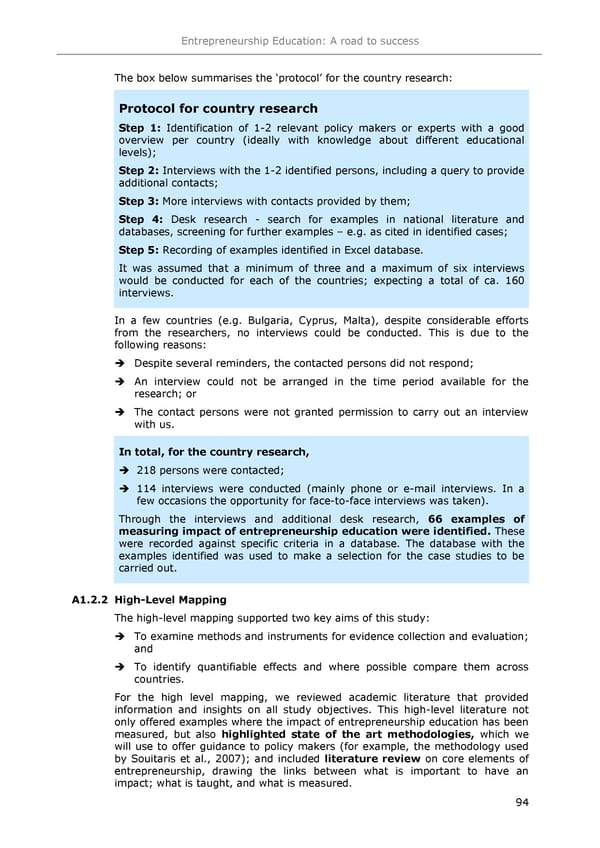Entrepreneurship Education: A road to success The box below summarises the 8protocol9 for the country research: Protocol for country research Step 1: Identification of 1-2 relevant policy makers or experts with a good overview per country (ideally with knowledge about different educational levels); Step 2: Interviews with the 1-2 identified persons, including a query to provide additional contacts; Step 3: More interviews with contacts provided by them; Step 4: Desk research - search for examples in national literature and databases, screening for further examples 3 e.g. as cited in identified cases; Step 5: Recording of examples identified in Excel database. It was assumed that a minimum of three and a maximum of six interviews would be conducted for each of the countries; expecting a total of ca. 160 interviews. In a few countries (e.g. Bulgaria, Cyprus, Malta), despite considerable efforts from the researchers, no interviews could be conducted. This is due to the following reasons: Despite several reminders, the contacted persons did not respond; An interview could not be arranged in the time period available for the research; or The contact persons were not granted permission to carry out an interview with us. In total, for the country research, 218 persons were contacted; 114 interviews were conducted (mainly phone or e-mail interviews. In a few occasions the opportunity for face-to-face interviews was taken). Through the interviews and additional desk research, 66 examples of measuring impact of entrepreneurship education were identified. These were recorded against specific criteria in a database. The database with the examples identified was used to make a selection for the case studies to be carried out. A1.2.2 High-Level Mapping The high-level mapping supported two key aims of this study: To examine methods and instruments for evidence collection and evaluation; and To identify quantifiable effects and where possible compare them across countries. For the high level mapping, we reviewed academic literature that provided information and insights on all study objectives. This high-level literature not only offered examples where the impact of entrepreneurship education has been measured, but also highlighted state of the art methodologies, which we will use to offer guidance to policy makers (for example, the methodology used by Souitaris et al., 2007); and included literature review on core elements of entrepreneurship, drawing the links between what is important to have an impact; what is taught, and what is measured. 94
 Entrepreneurship Education Page 97 Page 99
Entrepreneurship Education Page 97 Page 99